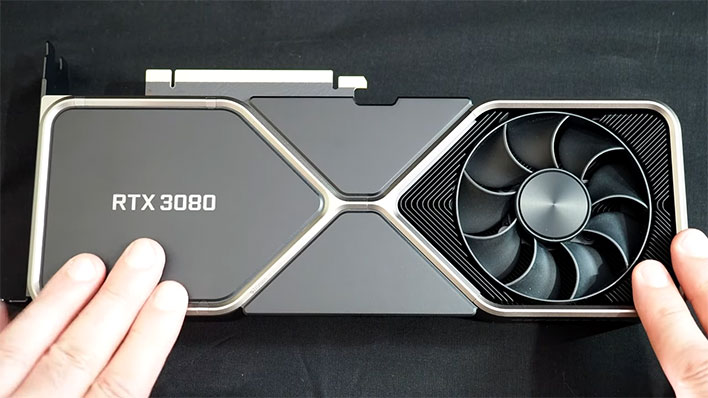When or if NVIDIA decides to introduce a refreshed
GeForce RTX 3080 with more memory than the original SKU remains to be seen. However, if the upgraded graphics card does come to fruition, it might arrive with a beefier upgrade than just some additional GDDR6X slapped on, according to the latest unofficial rumor mill chatter.
By the way, we're reasonably confident NVIDIA will actually introduce a refreshed model. Not because of any inside information (we don't have any), but the clearest evidence yet is a
recent registration by Gigabyte with the Eurasian Economic Commission (EEC), which references ten upgraded GeForce RTX 3080 models.
The model designations for each of the cards listed seemingly confirm it will arrive with 12GB of GDDR6X memory. For example, "GV-N3080AORUS M-12GD" points to a Gigabyte Aorus Master GeForce RTX 3080 with 12GB of memory.
Now, however, the folks at Videocardz have come across information suggesting the refreshed GeForce RTX 3080 will also boast a wider memory bus width. Whereas the existing version pairs 10GB of GDDR6X memory with a 320-bit bus, the upgraded model is said to feature 12GB of GDDR6X memory linked to a 384-bit bus.
The site also claims the refreshed GeForce RTX 3080 will have more CUDA cores—8,960 compared to 8,704. So this is how the 3080 series would compare with the refreshed model thrown into the mix...
- GeForce RTX 3080 Ti: 10,240 CUDA cores, 12GB GDDR6X, 384-bit bus (912GB/s bandwidth)
- GeForce RTX 3080 (Refresh): 8,960 CUDA cores, 12GB GDDR6X, 384-bit bus (912GB/s bandwidth)
- GeForce RTX 3080: 8,704 CUDA cores, 10GB GDDR6X, 320-bit bus (760GB/s bandwidth)
In essence, the refreshed GeForce RTX 3080 would be a step closer to the Ti model, though with fewer CUDA cores. We also don't know what the GPU clocks will look like. Either way, we're also looking at a higher power draw—the card is said to have a 340-350W TDP.
Of course, finalized specs could change between now and whenever the card launches. Originally rumored to release in January 2022, the latest unofficial chatter says NVIDIA is
delaying the launch, and will instead only unveil the GeForce RTX 3090 Ti at CES next month.


